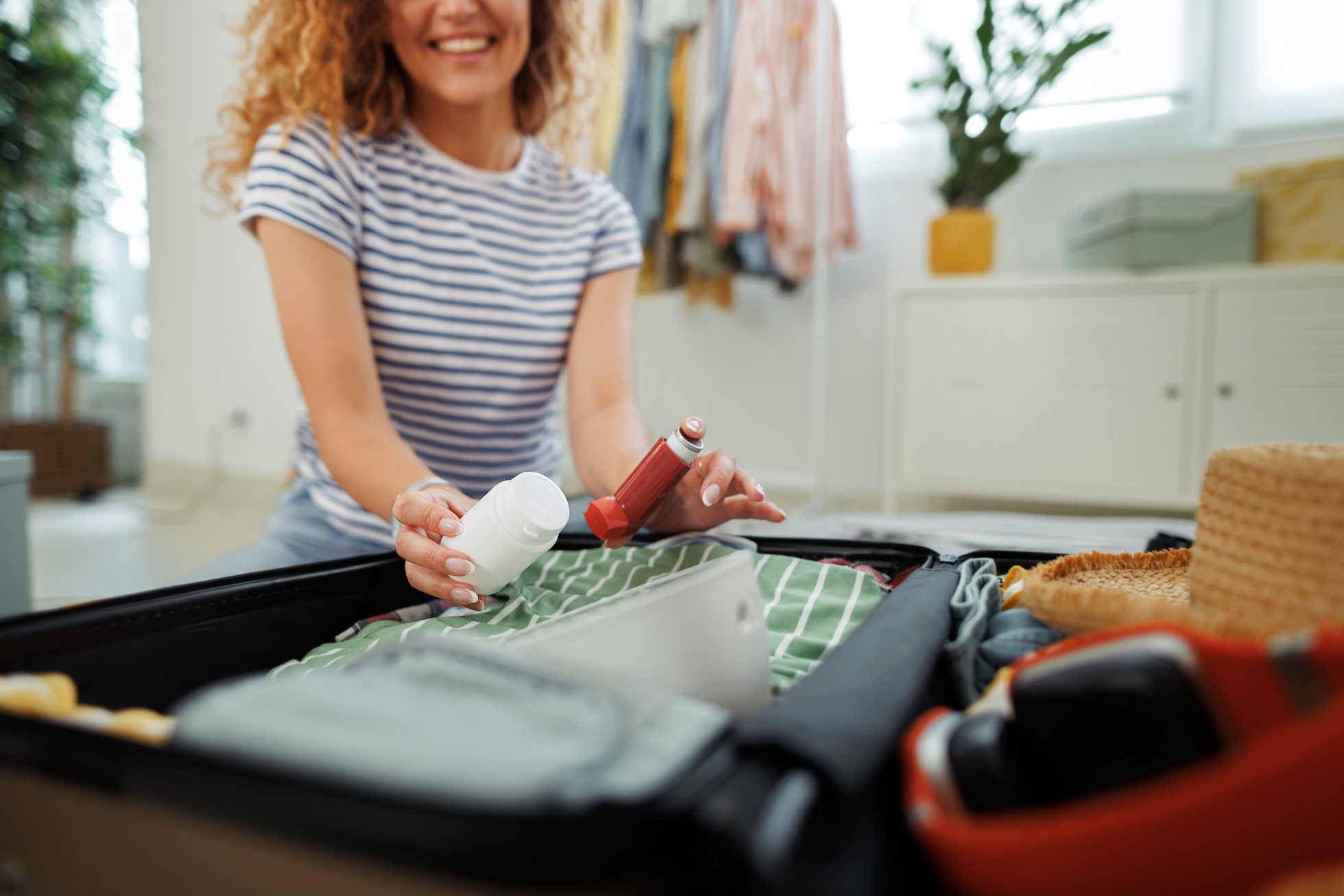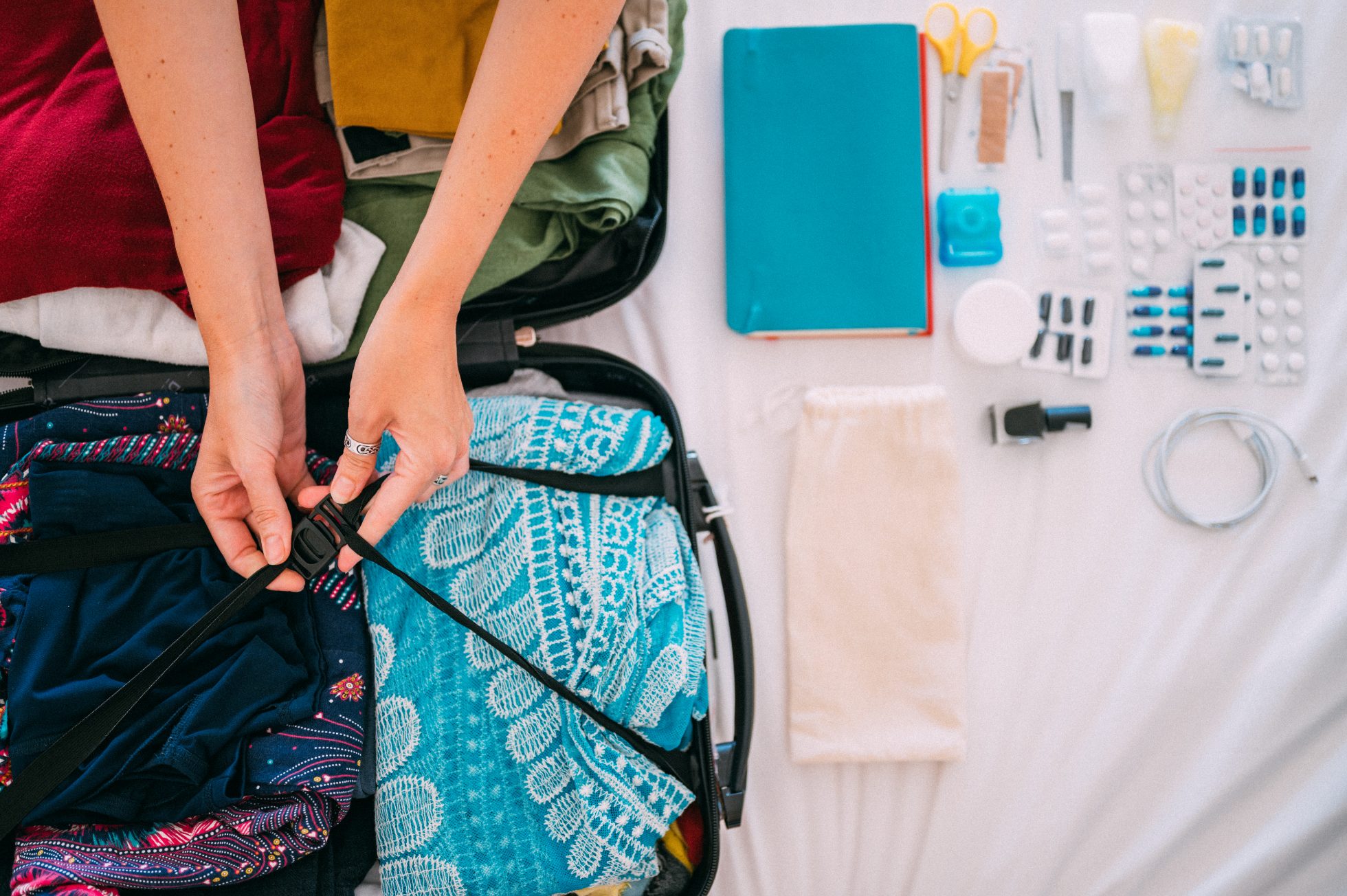Safe transportation of medicines - why should they be in hand luggage?
Reading time 🕗 4 minutes | April 2, 2024 | The material was prepared by the portal Politykazdrowotna.com

Any passenger going on air travel can take a supply of medicine with them to guarantee proper functioning. This is allowed and generally accepted regardless of the country and airline. How to properly pack your medications to guarantee your safety? What to pay attention to in order to avoid complications during airport inspections? In addition to medications, can medical equipment be transported? These are just a few of the questions that come to mind for passengers planning to travel. In the following material, we will give you a hint on how to transport medicines by airplane.
✅ This is good to know before you go:
- Place medications in your carry-on luggage.
- Keep the original packages of medicines with labels and leaflets, in case of inspection at the airport.
- Be sure to pack medicines in a transparent container.
- Check the applicable regulations for importing medicinal substances at the embassy of the country you are traveling to, and carry a medical certificate.
- How do you transport medicines on an airplane?
- The most important rule - we carry medicines in hand luggage
- How to pack medicines in hand luggage?
- Can all medicines be taken with you when you travel?
- What are the permitted quantities of drugs transported?
- Documents matter. What is worth bringing with you?
- Safe transportation of medicines abroad
- Other medical equipment allowed to be carried on board aircraft
- Summary
- How do you transport medicines on an airplane?
Read also:
How do you transport medicines on an airplane?
For any trip, good preparation is crucial. Packing the most important things, which are undoubtedly medicines, should be planned in advance. It's worth making sure you have a sufficient supply of medicines for the entire trip and in case of unexpected delays or other emergencies. So, how to transport medicines on a plane?
The most important rule - we carry medicines in hand luggage
Many passengers are still unsure whether carrying medicines in hand luggage is allowed. It is worth noting that under current regulations such action is not only acceptable, but also highly promoted by all airlines around the world.
Necessary travel medications should always be on hand at any time during the trip. It should be noted that carrying medicines in checked baggage is also possible, but due to the risk of potential delays in its delivery, having medicines with you is extremely important. In addition, the baggage hold is subject to much lower temperatures, which are not advisable for many pharmaceuticals.

How to pack medicines in hand luggage?
“We always keep medicines in luggage in their original packaging with labels and leaflets, preferably in the only transparent package. If the drug needs to be transported at a low temperature, you can use a thermos, a refrigerated container or a thermal bag'' explains in an interview with politykazdrowotna.com Dr. of Pharmaceutical Sciences Justyna Kaźmierczak.
Can all medicines be taken with you when you travel?
In hand luggage, you can carry both generally available (over-the-counter) medicines and those prescribed by a doctor:
- prescription drugs (for example, antibiotics, specialized medications)
- common medicines (including syrups, medicines containing liquids and gels, ointments, eye drops, nasal/throat sprays, etc.).
- disinfecting fluids
- contact lens liquids, saline solutions (treated as mainstream medicines)
What are the permitted quantities of drugs transported?
When it comes to transportation by air, there is one rule - you should take with you as much medicine as you need for the trip, including a contingency supply.
Interestingly, this also applies to the transportation of medicines containing liquids. Passengers are allowed to take more than 100 ml of medicine with them on board the plane, provided they have the appropriate medical documentation for this with the doctor's recommendations (also in English), as long as it is necessary for the passenger to travel for health reasons.
Documents matter. What is worth bringing with you?
In some cases, during airport security screening, we may be asked to confirm the need to carry a particular medication. That's why it's a good idea to carry the appropriate medical documentation, especially when carrying prescription drugs in your carry-on luggage. It's a good idea to have the free myIKP app, as this is where you can easily find e-prescriptions issued, as well as have quick access to your medical history.
One should always keep in mind that each country has its own regulations regarding the possession of medicinal substances. In some countries, for example, opioids (codeine or tramadol) or pseudoephedrine, which is an ingredient in popular sinus and cold medicines in Poland, are considered illegal.
.coreimg.jpg/1750142423533/GettyImages-818413712 (1).jpg)
Safe transportation of medicines abroad
"In countries such as India, Turkey, Pakistan, Saudi Arabia, the US and the United Arab Emirates, there is a list of medicines that must not be imported. Before each trip, you should check the applicable regulations for importing medicines at the embassy of the country you are traveling to. The gov.pl website also has all the necessary contacts for specific traveler questions,'' Dr. Kaźmierczak noted.
Other medical equipment allowed to be carried on board aircraft
Passengers are also allowed to take selected medical supplies with them on the plane for their own use. This group of items includes:
- oxygen or air trays weighing up to 5 kg,
- glucometer,
- portable inhalers,
- ampoule syringes in their original packaging (e.g., with liquid insulin),
- electronic thermometer (IMPORTANT: thermometers with mercury are prohibited in carry-on luggage),
- medical devices such as an AED defibrillator,
- dry ice weighing up to 2.5 kg (carry-on only to cool other medicines),
- cooling cartridges.
It is very important that if you want to transport additional medical equipment, you should contact the carrier in advance and discuss in detail the possible conditions of carriage. The same applies, for example, to the carriage of wheelchairs, as each airline has individual regulations in this aspect.
Summary
Knowledge of the rules for the carriage of medicines is, above all, a guarantee of a peaceful journey. Any doubts should be dispelled in advance by contacting an airline representative, as well as verifying the current rules of carriage on the official website of the Civil Aviation Authority in a dedicated search engine.